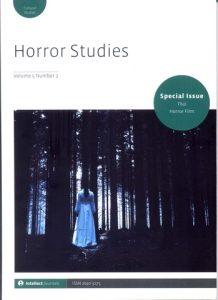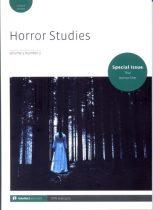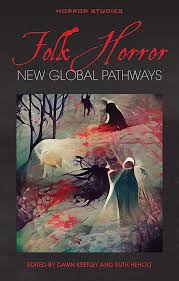2023
 While folk horror has never been identified as exclusive to western cinema, most studies of the topic have so far been strongly aligned with western world-views, philosophies and methodologies. This makes it difficult to apply their findings to films made in non-Christian non-western countries, such as Thailand. This article discusses Banjong Pisanthanakun’s film Rang Song (The Medium) (2021) as a case in point to demonstrate how folk horror operates as a mode in Thai cinema. Building on the existing studies and modifying the current definitions of folk horror to apply them to the Thai cultural context, the article argues that Thai folk horror narratives are steeped in representations of the urban–rural divide that pit metropolitan Bangkok against low-income provinces (in particular, the northeastern region of Isan) and reflect on cultural tensions related to ethnicity and class.
While folk horror has never been identified as exclusive to western cinema, most studies of the topic have so far been strongly aligned with western world-views, philosophies and methodologies. This makes it difficult to apply their findings to films made in non-Christian non-western countries, such as Thailand. This article discusses Banjong Pisanthanakun’s film Rang Song (The Medium) (2021) as a case in point to demonstrate how folk horror operates as a mode in Thai cinema. Building on the existing studies and modifying the current definitions of folk horror to apply them to the Thai cultural context, the article argues that Thai folk horror narratives are steeped in representations of the urban–rural divide that pit metropolitan Bangkok against low-income provinces (in particular, the northeastern region of Isan) and reflect on cultural tensions related to ethnicity and class.



 This article discusses the construction of phi pop as the monstrous figure of Thai folklore and proposes to read phi pop films as a classic example of Thai folk horror – a local sub-genre of horror whose main convention seems to be the representation of the insurmountable rural/urban divide. The films take different approaches to the topic, and the cinematic phi pop emerges as a figure of both comedy and horror, although in newer productions where the creature is no longer isolated in a remote village but rather follows rural migrants into the city, its portrayals are significantly more unnerving. The chapter provides a brief overview of Thai beliefs concerning the origin and characteristics of the creature and examines four films representative of most common approaches to Thai folk horror: Ban Phi Pop (Srisawat 1989), P (Spurrier 2005), Mekong Hotel (Weerasethakul 2012) and Pob (Ratanaruang 2018).
This article discusses the construction of phi pop as the monstrous figure of Thai folklore and proposes to read phi pop films as a classic example of Thai folk horror – a local sub-genre of horror whose main convention seems to be the representation of the insurmountable rural/urban divide. The films take different approaches to the topic, and the cinematic phi pop emerges as a figure of both comedy and horror, although in newer productions where the creature is no longer isolated in a remote village but rather follows rural migrants into the city, its portrayals are significantly more unnerving. The chapter provides a brief overview of Thai beliefs concerning the origin and characteristics of the creature and examines four films representative of most common approaches to Thai folk horror: Ban Phi Pop (Srisawat 1989), P (Spurrier 2005), Mekong Hotel (Weerasethakul 2012) and Pob (Ratanaruang 2018).